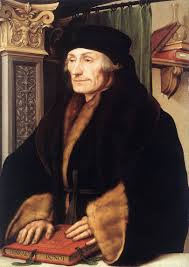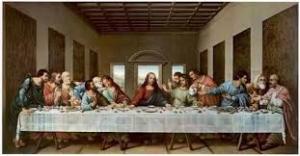Erasmus and Folly
Erasmus of Rotterdam, who was a classical scholar and ordained a priest in 1492, wrote an excerpt called “The Praise of Folly”. It is the most well-known work of Erasmus, and in it he was concerned that Christianity was being transformed into mere superstition.
He argued that fools wind up victorious in all areas of life. Though, his definition of folly wasn’t just only stupidity or ignorance, but also emotion or instinct as opposed to reason and intellect. For example, he would argue; could there be anything more ridiculous than man’s pursuit of women and the bondage of monogamous marriage being bound to only one woman? What rational woman would pay for this with the pains and trials of childbirth and motherhood? He answers, it is only through folly. Yet, the whole mankind exists thanks to this folly. Then he asks, if people were ruled by reason, would we have bravery?
Erasmus was saying that mankind was basically ruled by folly. Differing with this point of view, I believe that men and women seek each other and marry because of our nature. Since the beginning men and women were ordered by God to unite in a divine nature and design, showing the representation of the unification of our spirit with His.
Genesis 2:24
Therefore shall a man leave his father and his mother, and shall cleave unto his wife: and they shall be one flesh.
1 Corinthians 6:17
But he that is joined unto the Lord is one spirit.
However, mankind was confused and deviated from the divine nature of God in the fall of Adam and Eve. Their spirit was put into sleep, because it lost the life of Jesus.
Genesis 3:3
But of the fruit of the tree which is in the midst of the garden, God hath said, Ye shall not eat of it, neither shall ye touch it, lest ye die.
Nevertheless, we still know about the unification of man and woman, because of that nature and design that was marked in our spirits. We pursue it, because we feel that is where we belong. Nonetheless, when a homosexual marriage is made, it was caused because of the confusion and deviation that came after the fall. Gracefully, thanks to Jesus, he came to restore that which was as lost. This means that now we can go back to Him.
1 Corinthians 6:17
But he that is joined unto the Lord is one spirit
Folly is on earth, and does rule over the majority, making a disorder in different areas of people’s lives. Marriage, however, made in the divine design and order of God is not folly.
Answering the question of bravery, it is also a divine nature and design of God. As a matter of fact, it is also one the attributes God possesses. And He has given it to us.
Psalm 118:16
The right hand of the Lord is exalted: the right hand of the Lord doeth valiantly.
1 Chronicles 19:13
Be of good courage, and let us behave ourselves valiantly for our people, and for the cities of our God: and let the Lord do that which is good in his sight.
Bravery is not folly either. The bible calls folly that which is unjust according to the eyes of God. Folly is everything that does not come from the will of God, including reason.
Isaiah 9:17
Therefore the Lord shall have no joy in their young men, neither shall have mercy on their fatherless and widows: for everyone is an hypocrite and an evildoer, and every mouth speaketh folly. For all this his anger is not turned away, but his hand is stretched out still.
Jeremiah 23:13
And I have seen folly in the prophets of Samaria; they prophesied in Baal, and caused my people Israel to err.
Proverbs 15:21
Folly is joy to him that is destitute of wisdom: but a man of understanding walketh uprightly.
High Renaissance Artists
We normally think of three people in particular as having been the key artists of the High Renaissance. Raphael, Leonardo da Vinci, and Michelangelo.
Raphael was born in the year 1483, and in the early 1500s he made numerous Madonnas; fifty in total. His forte or strong area was self-portraits or portrait painting. Pope Julius II commissioned him to decorate the Stanza della Segnatura, where he would paint a representation of the “harmony” of religion and philosophy, Christianity, and the classical world. This would be his major work. There he dedicates one wall to the Trinity and 12 figures from the Old Testament and Christian history. On another wall he portrays philosophy. On the third he honors poetry and music, and on the fourth he paints the role of law in civilization.
Leonardo da Vinci is probably the one you’ve heard of the most. He was born in 1452, and he was an architect, inventor, scientist, engineer, and painter. He had a huge rage of interests such as nature, where he would make anatomical and botanical drawings. He thought that a painter needed to know such things in order for his paintings to be realistic. We only know of ten paintings that survived from Leonardo. One of his major works was the “Virgin of the Rocks”. It is now a central part of a church altarpiece.
 By Michelangelo (Sistine Chapel)
By Michelangelo (Sistine Chapel)
Finally, Michelangelo was born in 1475. His preferred medium was marble carving, but his skills surpassed this. His first masterpiece was at age 17. Not only did Pope Julius II ask Raphael to make him a work, but he also asked Michelangelo. Julius wanted a huge tomb adorned by life-sized figures, within a dramatic architectural setting. It was supposed to be made of 40 figures, but he only completed three. Not finishing works was common with Michelangelo, but we don’t know why.
Art is an important area. Art influences a place, it creates an atmosphere. If you put a painting of a skull in the living room of your house, you will feel an atmosphere of death and darkness that will create fear inside of you. However, if you put a painting of a river with trees and green grass, it will create a sensation of rest and peace.
Nonetheless, not only does the painting influence the atmosphere of a place, but also what is behind the painting, and the artist itself. Even if the painting is beautiful, what may be behind it could be something that creates division, fighting, immorality, etc. For example, Greek and Roman paintings are generally pornographic, and even if they are considered masterpieces, they create an incentive to sexual immorality. The same thing happens with abstract painting.
As I said before, the artist also influences his or her art. If the person is a person filled with anguish or depression, its art will reflect it; even if it is a painting of a beautiful river. People usually use phrases like the spirit of the art, which is true. Every art has a spirit and an influence. What are letting in your house, job, business, car, etc.? What atmosphere do you want to create?









